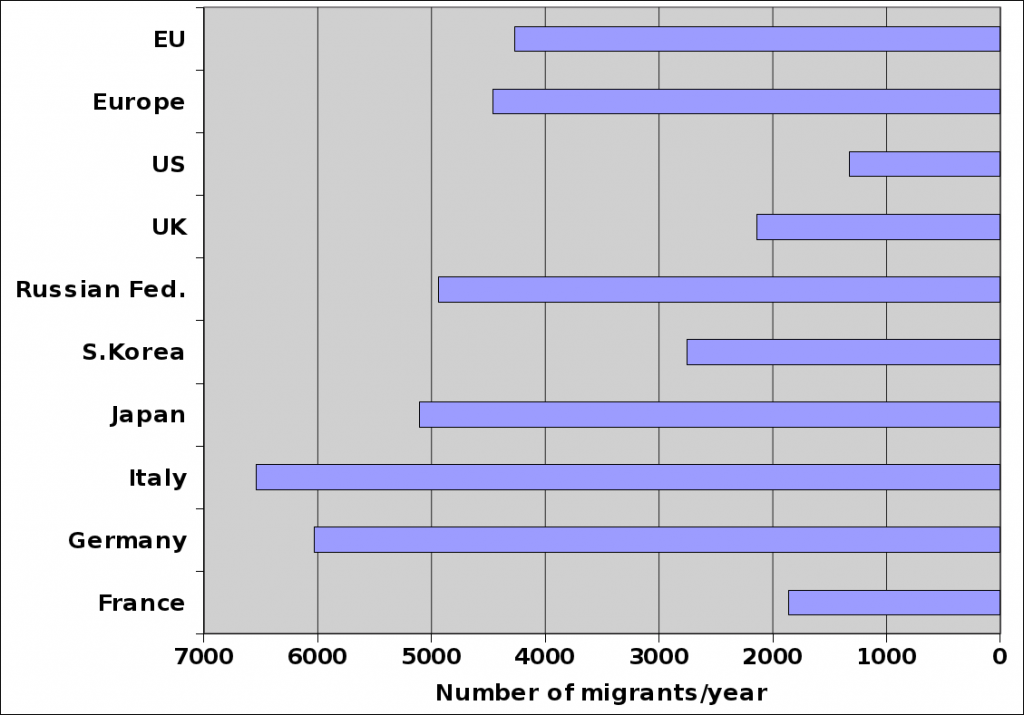Reformatted and somewhat updated on 20250102
The extreme right, xenophobia and nationalism are gaining ground in many countries in Europe. Sometimes (Belgium), the situation borders on the ridiculous, but no-one dies! In Norway, after a bomb attack on 22 July, a psychopath took his gun and decided the eliminate the perceived enemy himself, so brutally that even the political parties that normally thrive on xenophobia had to distance themselves. There were some well publicized hiccups, though: in France, Jean-Marie Le Pen (Honorary President of the Front National) suggested that the “naive approach” of the Norwegian government (towards immigration) is more serious than the attacks by Anders Behring Breivik. In Italy, Il Giornale, a newspaper belonging to Berlusconi had to redesign their front page because they “automatically” blamed Islamic terrorism before they realised the aborigenal1 extreme right was the problem. Click here to see how the front page was changed from sono sempre loro ci attaccano (it’s them again: they are attacking us) to attacco sanguinoso: strage in Norvegia (gruesome attack: massacre in Norway.)
Is there a harmless way of being xenophobic? When does the mention of a person being a foreigner cease to be objective and become xenophobia? When should we start worrying? Italian TV news, for instance, almost systematically mention the nationality of lawbreakers, e.g. “a drunk Belgian driver has seriously injured a child in Naples” or “a gang of six burglers (three of them Moroccans) arrested in Milan”… When the culprit is Italian, he is just Italian; he’s not from Lombardy, Venice or Sicily. Just a plain Italian, almost as ordinary (and harmless?) as you and I.
Racism is very present, but rarely displayed openly. The problem is not new either and some of you may remember Cittadella, a “fortress”2 that fought in 2007 to keep out poor (Peter Popham, in the Independent.) Every now and then, the tension erupts: there have been outright battles between seasonal agricultural labourers (mostly illegal immigrants) and the Italian population, for instance in Rosarno (2010) without leading politicians clearly stating their position, and publicly disapproving of the violence which is largely driven by poverty wages, semi-slave conditions and the mafia. Note that the pope did condemn the violence. Human Rights Watch stress that the xenophobia does not specifically target Africans. Asians and Gypsies have also been the victims of “active racisms”; their recent report is a good summary of the situation.
The truth is that there is a very high level of tolereance for openly racist attitudes in Italy, and xenophobia is now part of the stock-in-trade of many politicians. There is no denying that xenophobia and homophobia contributed to the election and the re-election of Berlusconi and his friends! They cannot possibly swim against the current and antagonize their voters!
Many Italian newspapers, for instance La Repubblica, have always clearly condemned racism. What about the Osservatore Romano, the official newspaper of the Vatican State. Good Christians love their neigbours – up to a point. Do they condemn xenophobia when the pope does so? Not sure3! The Osservatore Romano is an interesting mix of Vatican news and views and Italian facts. The Vatican does not hesitate to interfere with Italian politics, and all (well, amost all) Italian politicians like to harvest the extra catholic votes that come with every picture together with the pope.
Below is a collection of photographs of Italian politicians active at the time this post was first published, in 2011. Regardless of their actual commitment to Christian values, they have all gone to see the Pope to scrape together a few more Catholic votes. For some people I could not find any photograph with a pope: Bertinotti, Cofferati, di Pietro, and recent pictures of Bonino and Panella. This does not mean they don’t exist! I have added a typically racist Lega Nord poster: “Guess who comes last?” and a photograph of Salvini (click here for the source), who in 2018 and 2020 repeatedly claimed to be more catholic than the pope by very publicly and conspicuously displaying his rosary. There have been clashes between the Lega nord and the Vatican about the harsh treatment of immigrants, especially boat people, when Salvini was Minister of the interior (2018-2019). Salvini has eventually piped down and sought to “normalise” his relations with the Holy see. But the tension remains; here in the Huffington post.


I buy the Osservatore romano every now and then because international news and “exotic” places are usually well covered. You don’t go to the Wall Street Journal for liberal views, and you don’t read the Osservatore Romano for advanced positions on population dynamics! Their view is: “Be fruitful and increase in number; fill the earth etc.” That’s a well known programme!
When I read the Osservatore on 201107214, I glanced at the usual Be fruitful and increase in number; fill the earth etc. article on the first page (signed by Ettore Gotti Tedeschi). No surprise in the contents: (…) The aging of the population may (…) be considered the true origin of the current economic crisis (…) Fewer people also enter the production cycle and, when they can enter, do it very slowly (…) it is essential to have the courage to address the issue of birth rate and aging population (…) it is high time (…) to support families in their natural vocation to bear children (…). After all, nature itself teaches that if man and woman do not have children it is difficult for someone to take care of them as they grow older. The State can try, but at heavy cost.
Somewhere between the true origin and the courage to address the issue of birth rate, we find The costs of an aging population cannot be promoted by young people; besides their decreasing numbers, they might also wonder why they should do so, especially if immigrants.

How do you read this? To me, the sentence means that immigration is dangerous because immigrants may eventually refuse to pay for “old” Europeans5. Is the statement xenophobic? It is! When I read Church leaders have underlined the broad right to emigrate, the specific rights of refugees and the responsibility of wealthier nations to welcome those in need I cannot help interpreting “wealthier nations” as “some other country, but not here!”.
The catholic (the word means “all-involving” or universal!) church has sometimes written in a friendly way about immigrants. Replacement migration6, for instance did apparently not create major problems. But when I read the statement above, I cannot help thinking that the Holy See has mixed up its mandate of all-involving love and its Italian roots!
References
H. Eiberg, J. Troelsen, M.Nielsen, A. Mikkelsen, J.Mengel-From, K.W.Kjaer & L.Hansen. 2008. Blue eye color in humans may be caused by a perfectly associated founder mutation in a regulatory element located within the HERC2 gene inhibiting OCA2 expression. Hum. Genet. 123:177:187. Also here.
Marcus Valerius Martialis: Martial’s epigrams, a selection. Translated and presented by Gary Wills.; Viking, published by Penguin Books, 2007. Epigram 3.28.
Science. 2007. European skin turned pale only recently, gene suggests. Science, 316:364.
R.A.Sturm. 2009. Molecular genetics of human pigmentation diversity. Human Molecular Genetics, 18:R9-R17. Also here.
D.White & M.Rabago-Smith. 2011. Genotype-phenotype associations and human eye color. J. of Human Genetics 56:5-7. Available here.
Notes
- The word “aboriginal” (latin: ab origine, from the beginning) means “native”, even if it is often used in relation to Australia. I enjoyed using it in the present “Nordic” context. I am sure Anders Breivik, who is so proud of his Viking origins would be surprised to learn that blue eyes are very new in human evolution. Probably less than 10000 years ago, some “immigrant” underwent a mutation that turned his/her eyes from dark to blue, somewhere north of the Black sea, and as successive waves of immigrants kept moving on, the blue eyes became common in some areas. Fair (“Caucasian”) skin is probably even more recent (see Eiberg et al., 2008; Science, 2007; Sturm, 2009; White and Rabago-Smith, 2011) ↩︎
- The Italian word “cittadella” means “fortress, stronghold” (just like the English word “citadel”. ↩︎
- Positions (or should I say sensitivities or maybe perceptions?) have also changed between popes, with Bergoglio having a good, but not always consistent record. ↩︎
- I scanned the page of the Osservatore Romano to a PNG file, and then used YAGF to OCR (optical character recognition) the image into text. Try YAGF if you don’t t know it: there were extremely few errors.I then pasted the text into Google Translate for an English version. The translation was perfect, which leads me to believe that Google must have found an exact translation somewhere. I was unable to locate it. Apologies if I stole someone’s work! Let me know. ↩︎
- The concept of “old Europeans” can be understood ad libitum! ↩︎
- Replacement migration: the fact that declining birth rates can be compensated by immigration; see wikipedia. The concept was put forward in a report of the UN Population Department in March 2000, but generally not well received in developed countries, for instance Italy, where the issue is particularly serious. See figure. ↩︎









20130715: Roberto Calderoli, a Northern League senator, likened the country’s first black minister to an orangutan! In a normal country, Calderoli would be taken to court; in Italy, the prime minister said Calderoli’s statement was “totally inacceptable”. Source: http://www.telegraph.co.uk/news/worldnews/europe/italy/10181191/Italy-race-row-has-shamed-whole-country.html
L’Italie est un pays dont le chef du gouvernement, Berlusconi, a déclaré qu’il fallait être malade mental et schizophrène pour être magistrat…
Cette déclaration devrait être impossible en démocratie. Elle n’a donné lieu à aucune plainte en justice ni à un vote de défiance du parlement.
La démocratie italienne ne serait donc pas ce qu’elle dit être. Ni la démocratie représentative en général.
Un des meilleurs résultats de Berlusconi, c’était la loi sur le “legittimo sospetto” (suspicion légitime; http://it.wikipedia.org/wiki/Legittimo_sospetto) qui permet à un inculpé de faire transférer un procès dans une autre localité où les juges seront plus “objectifs”. L’italie mettra du temps à se remettre de Berlusconi et de quelques autres tordus (Beppe Grillo). La période Berlusconi (élu trois fois!) montre en tout cas que le glissement vers la dictature est graduel, très graduel… qu’l est souvent librement consenti et qu’il est difficile de savoir quand il faut tirer le signal d’alarme.